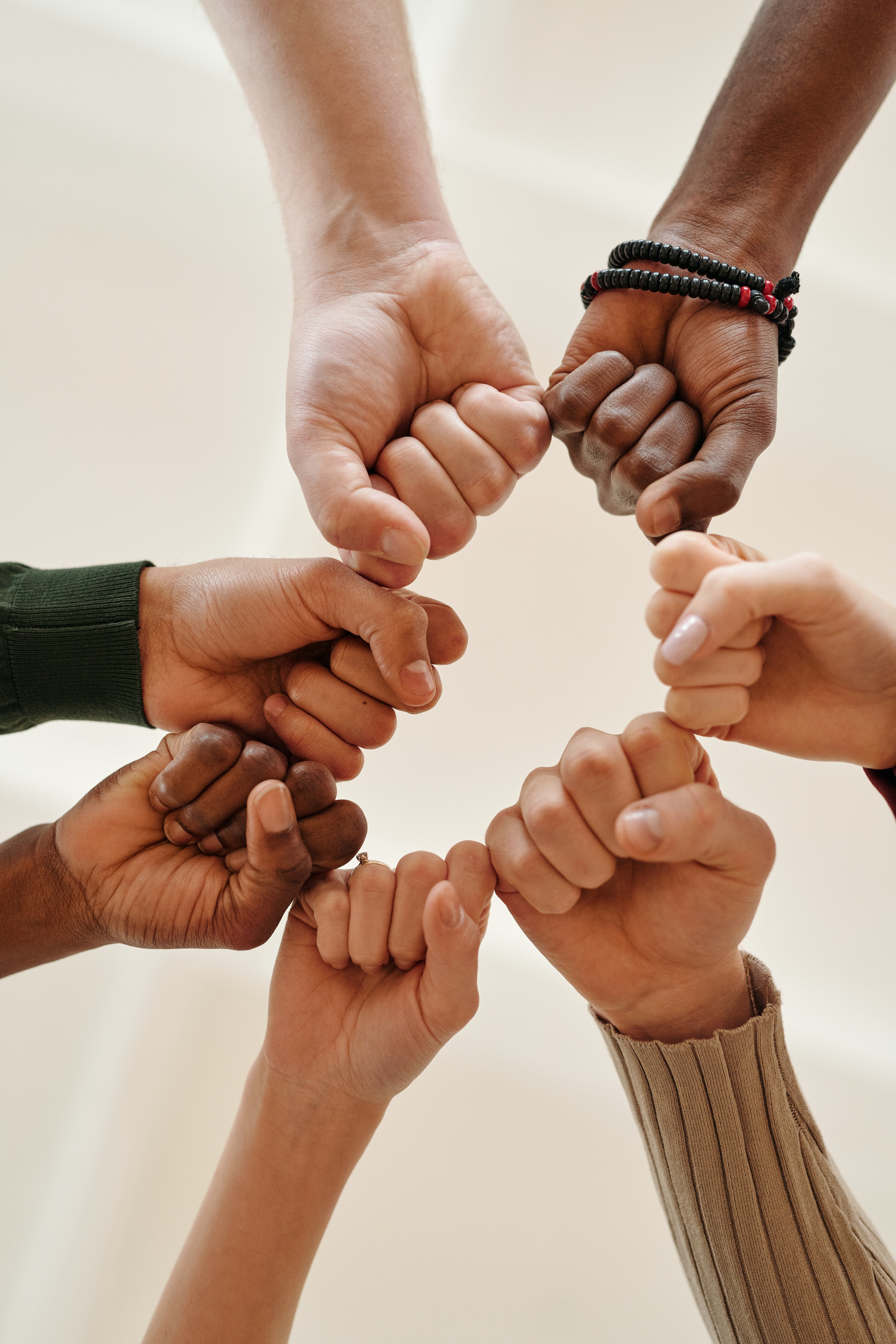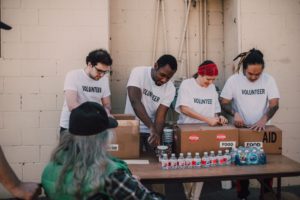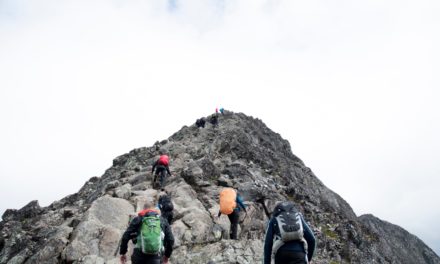Covid is not the only disruption organizations have faced, nor will it be the last. Returning to the office, hybrid models of working, organizational restructures, being appointed as a new Team Lead, starting a new job, relocating to a new city or country, starting a family – these are all examples of contexts of change. Change itself is chaotic. It can be disruptive, depending on how it is managed and more importantly, how change is communicated. When we faced with change we need to know how to ‘regroup’ and adapt as quickly as possible to regain a sense of momentum and effectiveness. We need to think how can we settle our people down, remove any unnecessary anxiety, so work can continue but their needs can be addressed.
One way to begin to manage change more effectively is to apply a framework developed in 1988 by Drs Brentro, Brokenleg & Brocken. Their work focused on addressing the development of youth at risk and what emerged became the epitome of creating holistic resilience. Commonly referred to as the Circle of Courage, this framework identifies four key areas crucial to developing overall stability and functioning within an individual or group of people. When applied properly, it is a golden recipe for navigating change effectively…
The Four Key Areas and a Basic Explanation of Each Are:
Belonging: How do people connect and fit in with others? To whom/what do people feel a sense of attachment?
Mastery: What are people good at? What are their skills and how can they develop them further?
Independence: Do people feel like they have agency and autonomy, if so, where?
Generosity: How can people be generous to others? Who are those in our circle of influence whom we can assist? What is our broader social obligation? 
In exploring these four quadrants, people are able to identify their areas of greatest strength and weakness and then proceed to establish stability in their areas of greatest vulnerability. The framework is therefore not only diagnostic in helping us know why we are struggling, “I no longer feel connected to my team because we’re working from home and I don’t get to see them” –
Belonging; but it also helps us to design a better way forward to address this concern/ vulnerability…”we decided to create a drinks hour on a Friday afternoon, where the whole team showed up for an informal video call and we just spoke through how the week was and anything (not work related). It became our online ‘water-cooler’ debrief”. By applying the framework to yourself personally, your team or your organization, you can start to design your own roadmap back to stability and organizational effectiveness in a bespoke and nuanced manner.
Over the last 2 years TomorrowToday worked with several organizations as they navigated the pandemic. We decided to spotlight 4 organizations that serve as mini-case studies on how they addressed a specific disruptive change identified within their organization. Using the circle of courage as a framework, you can see first-hand how useful this model is in re-establishing a sense of equilibrium in navigating the uncertain terrain that ‘change’ is. Your organization might not be facing these exact challenges. In fact, the pandemic might feel like it’s in the review mirror for you now. However, change itself is a constant. Knowing how to manage change is a leader’s mandate, and the circle of courage is perhaps the golden ticket to knowing how to do this well…
Generosity
In April 2020 a leader of a large NGO in Kenya realized that her staff were taking considerable strain. Employees reported that they were not sleeping, stress and anxiety levels were at an all time high which impaired concentration and work based efficiency. People were worried about the health risks as well as the sustainability of their income and work positions. Recognizing this vulnerability (which immediately resonated with her personally as she had felt paralyzed by fear the few weeks prior), this leader realized she needed to take action quickly.  She considered what had helped her move from her own state of anxious paralysis towards someone more able to act and respond amidst the pandemic crisis. She realized it was through the informal -personal debrief spaces that she had been personally exposed to that allowed her to feel less ‘stuck’.
She considered what had helped her move from her own state of anxious paralysis towards someone more able to act and respond amidst the pandemic crisis. She realized it was through the informal -personal debrief spaces that she had been personally exposed to that allowed her to feel less ‘stuck’.
In talking through her fears of the impact Covid-19 would have on her organization she processed her anxiety effectively and was no longer gripped by the “what if” fear circle perpetuating in her own mind. She quickly recognized the value of shared group spaces and invited an external psychologist to join the team on a fortnightly basis to allow for team “Covid-19 debriefs”. Access to a psychologist was not commonly available within this context so employees felt very grateful for this unusual budget spend by the organization. The sessions were time capped and didn’t focus on being solution orientated. They were purely debrief spaces, and as people spoke and shared their concerns the concerns began to diminish. Not only did staff feel seen, taken care of and looked after- they also experienced higher work satisfaction levels and productivity increased.
Some might suggest that spending budget on ‘a non solution focused talking space’ in times of an economic crisis is a waste of money – the proof however, was that extending generously in this way towards her team resulted in a much higher return on investment in preventing burn out, sick days leave and high staff turnover.
Autonomy
We move across now to Malawi where a second organization, whose business strategy is built on in-person engagement, field research and public events to disseminate information and develop skills/ training, found themselves in a strategy crisis in the wake of Covid-19 restrictions. Their daily work processes were fundamentally challenged by restrictions on mobility and public health safety. They needed to rework their entire business strategy and outcomes – and do so quickly! Frustratingly, and as you can probably relate to, the redesign of their working models had gotten tied up in slow bureaucratic processes. Resulting in a conundrum – as an organization they needed to act decisively, without external support and at times, risking not waiting for the ‘higher up’ approval.
A clear example of this was the delay in the decision by the board to allow or prevent working from home in the early days of the pandemic. This decision was taking so long that the CEO decided to make an executive call which put her at risk of fall-out with the board, but she felt that the delay was putting her staff at risk and perpetuating uncertainty and panic. It is this kind of decisive autonomous decision making that crises require of leadership. She recognized that as an organization they needed to create “non-traditional ways of doing things”. This included leadership needing to give more autonomy to their teams – trusting staff that could now no longer be easily supervised and getting all employees to contribute to thinking of new strategies and interventions that allowed them as an organization to meet their targets without compromising their health and safety.
Ultimately, their new (and collective) focus became, “How do we remain relevant and meaningful in a Covid world?” In asking for shared input, their employees took greater personal responsibility for developing and implementing novel interventions. These included using radio broadcasting for training and skills development, engaging in independent research studies within their micro-community populations to assess what the needs were on the ground and how they wanted to be supported best. In doing this research the organization extended autonomy to their client base as well, by asking them to voice their challenges and needs and not simply assuming that they knew their client’s immediate concerns.
What is important to note here, from a psychological perspective, is that one of the greatest losses in a crisis is the loss of control. In thinking about how she could take control over matters of urgency herself, she created spaces for her employees to control something within their environment and enabled her client base to take control of voicing their needs; this leader created an enabling and autonomous environment that restored a sense of self-confidence and collective competence for everyone within her organization.
Mastery
Let’s switch to south Asia. The context is a tertiary education setting in Nepal. A Professor, whose scope of interest and work lies in expanding the digital learning interface for students. His recent mandate was establishing a masters level degree aimed at teachers and university lecturers, which focuses on introducing a digital mode of teaching. Definitely no easy task!
Trying to get people to change the way they work is no easy feat – and trying to get lecturers to change how they teach feels almost impossible. In a tertiary institution where there were no standardized email addresses for students or staff, you can imagine the uphill battle of introducing a digital learning curriculum.
Bringing people on board was a huge challenge; shifting mindsets is a massive undertaking that often requires some complicated psychological gymnastics. But then Covid-19 happened, and what was, in early March, a peripheral and gradual project, suddenly got catapulted to front and centre as the only option available for saving the academic year. Since March 2020 all internal resistance has fallen and staff have done a full 180 on their commitment to revising their teaching methodologies – they quite simply have been forced by the pandemic to do so.
In the space of a few months, 500 000 online access ID portals have been created, a task that previously would have taken over a year to complete. 97 teaching units (out of 147) have already switched to full time online teaching, with the prediction that all units will be online within the following month. Lecturers have accepted that they need to learn new and unorthodox methods for teaching and have been trained in online teaching skills. All communication now occurs through the institutions online platform.
What started as a crisis strategy has rapidly become an opportunity for new learning and mastery for teaching staff and students alike. A significant, and now embedded milestone, not only for the institution but also for educational pedagogy in Nepal. Developing mastery does not require a crisis, however in this case study, the urgency of needing to up-skill enabled a learning environment for lecturers previously fixed to their traditional ways of teaching. In doing so, it has equipped staff who previously felt they didn’t have the capacity to develop their online skills to suddenly become equipped and thereby creating a higher sense of self competence, broadening of skills and openness to new ways of working.
Belonging
Another example from south Asia is from a large organization based India, led by a powerful woman who has always viewed leadership as a ‘verb’ and been actively involved in the development and growth of her employees. Part of the organizational design was to build and embed a powerful integrated sense of identity where staff feel a sense of ownership and purpose in the organization. When the crisis hit there was already a deeply entrenched collective understanding that ‘we need to survive this’ rather than ‘I need to survive this’. 
Due to the existing culture which centered on building a sense of collective belonging, an internal resilience emerged. One which enabled a deep sense of embedded trust in leadership, an openness to adapt, and the unique ability to view disruption as an opportunity not just a threat. The messaging from top leadership was a re-affirmation of “we are all in this together” and because of the hard work invested in creating an organization of belonging this felt to be true rather than a cliched slogan. This sense of shared identity bolstered belonging and served as a psychological safety net for employees struggling with the crisis – they felt connected to and supported by a bigger, more robust organization and reframed their sense of purpose in serving broader community needs.
One can see how the 4 quadrants of the Circle of Courage framework impact and influence one another. The higher the sense (and security) of Belonging, the greater the ability to be Generous. As the CEO highlighted, because there was a strong sense of ‘we’ not ‘I’ the organization was able to move quickly in establishing broader community interventions such as a feeding program in which employees all donated 1 days salary towards the program. An incredible example of why intentionally building a leadership led, emotionally intelligent organizational culture creates employee loyalty and sustainability.
So there we have it. A framework of four key areas for developing stability and optimal functioning. Belonging. Mastery. Independence. Generosity. When applied to an individual, team, organization or even nation, it serves as a roadmap for where and how to intervene to allow for greater effectiveness.
Circle of Courage Workshop
Let our team help you establish Belonging, Mastery, Independence and Generosity in your new world of work.





